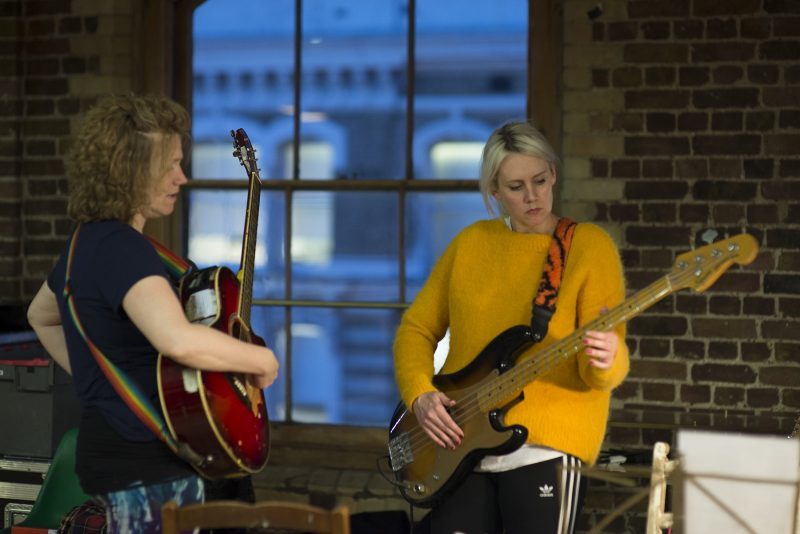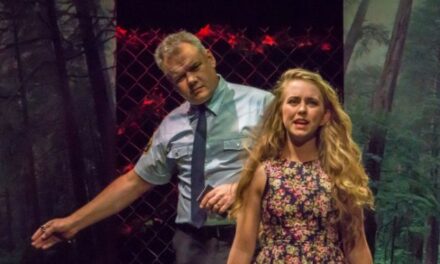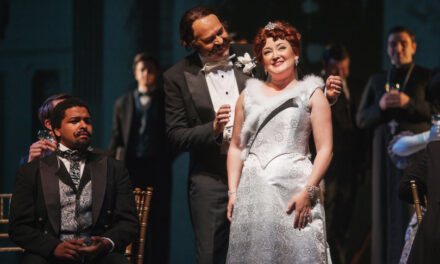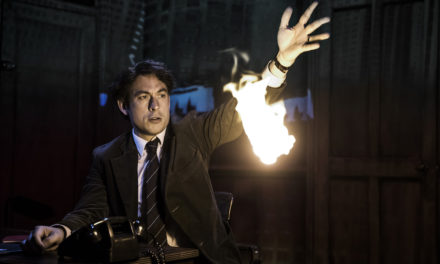I cannot believe it’s the first month of 2018 and I’m here in the last week of rehearsals for A Pacifist’s Guide To The War On Cancer. I usually spend January in a hole of hang-overs and failed detoxes, but I’m at work in a studio having been given a second chance to take this gorgeous show on the road.
A Pacifist’s Guide… is about how we talk about cancer, and to cancer patients, and whether this is helpful or actually destructive.
It’s made in collaboration with more than 30 real-life patients. It was originally created at the National Theatre in 2016 and we’re now taking the show to Liverpool, Newcastle, and Coventry before an Australian tour. And this time, I’m in it.
The idea began at a meeting with the Complicité theatre company. Judith Dimant, its producer, invited me to talk about making work on a grander scale supported by them. We chatted about various ideas that she wasn’t particularly keen on but the elephant in the room was her bald head. Before I left, I asked her if she had cancer. She muttered something about being “a fighter” and I was struck by the futility of this language.
Cancer can’t be beaten without extremely strong drugs and often brutal surgery, yet the ways in which we talk about it puts the patient in the driving seat. This means that if they die, they lose. And that seemed problematic to me.
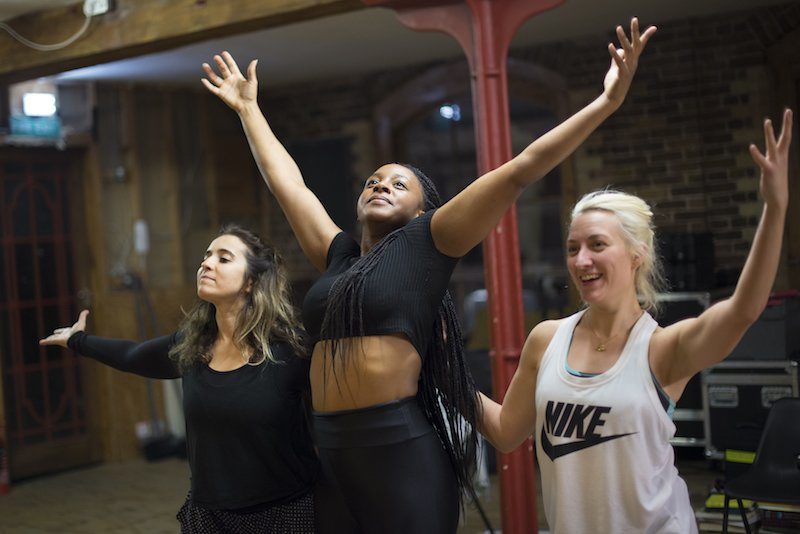
Performers Eva Alexander, Elexi Walker, and Lottie Vallis. Photo: © Sarah Ainslie
I asked Judith whether she would let me come to her treatment and interview her. She agreed and so began a three-year labor of love.
Early on I chose the form “musical” (or my version of it–more rock’n’roll gig than Merrily We Roll Along). I felt that for a disease as audacious and terrifying as cancer, this was the only genre of theatre that could hold it, tackle it, and allow us to have huge feelings about it.
I also chose to create “a pacifist’s guide.” It seems we “do” cancer a certain way in hospitals and adverts and films, and perhaps we should dig into that and try to create an alternative.
Musicals take massive swipes at giant subjects: race, Aids, and now cancer. I wrote this show with Brian Lobel–an excellent artist and expert in cancer, his own and others–and Tom Parkinson.
The show has undergone a bit of a revamp since its NT days. When I made that show, both I and my main cancer compadre Lara were deep in the belly of a hospital; me with a dangerously ill son, her with an osteosarcoma. I appeared in the show as a recorded voice, as I was deep in the Kingdom Of The Sick as Susan Sontag puts it. I always felt disappointed that I couldn’t come back from that kingdom and scream into the face of an audience, “…Sorry I ever promised a guide, there is no guide for what just happened to me. Please forgive me!”
All the fictional characters and stories have been scrapped and real stories have taken their place. Rather than a fictional hospital setting, there are a lot of pens, paper, and boxes, as it tracks us trying to put together a guide.
Inevitably, as one in two of us will have cancer in our lifetimes, the audience will be full of people who have, have had, will get, or have lost people to this disease. What this show allows us to do is to move beyond Judith’s “I’m a fighter” and towards “Hold me, I’m terrified, please tell me you are too”–a space where better care is demanded, real conversations can begin and metaphors and rhetoric can change.
A Pacifist’s Guide To The War On Cancer is at Liverpool Playhouse until February 3, then touring to February 17.
This article originally appeared in Inews on January 25, 2018, and has been reposted with permission.
This post was written by the author in their personal capacity.The opinions expressed in this article are the author’s own and do not reflect the view of The Theatre Times, their staff or collaborators.
This post was written by Bryony Kimmings.
The views expressed here belong to the author and do not necessarily reflect our views and opinions.

